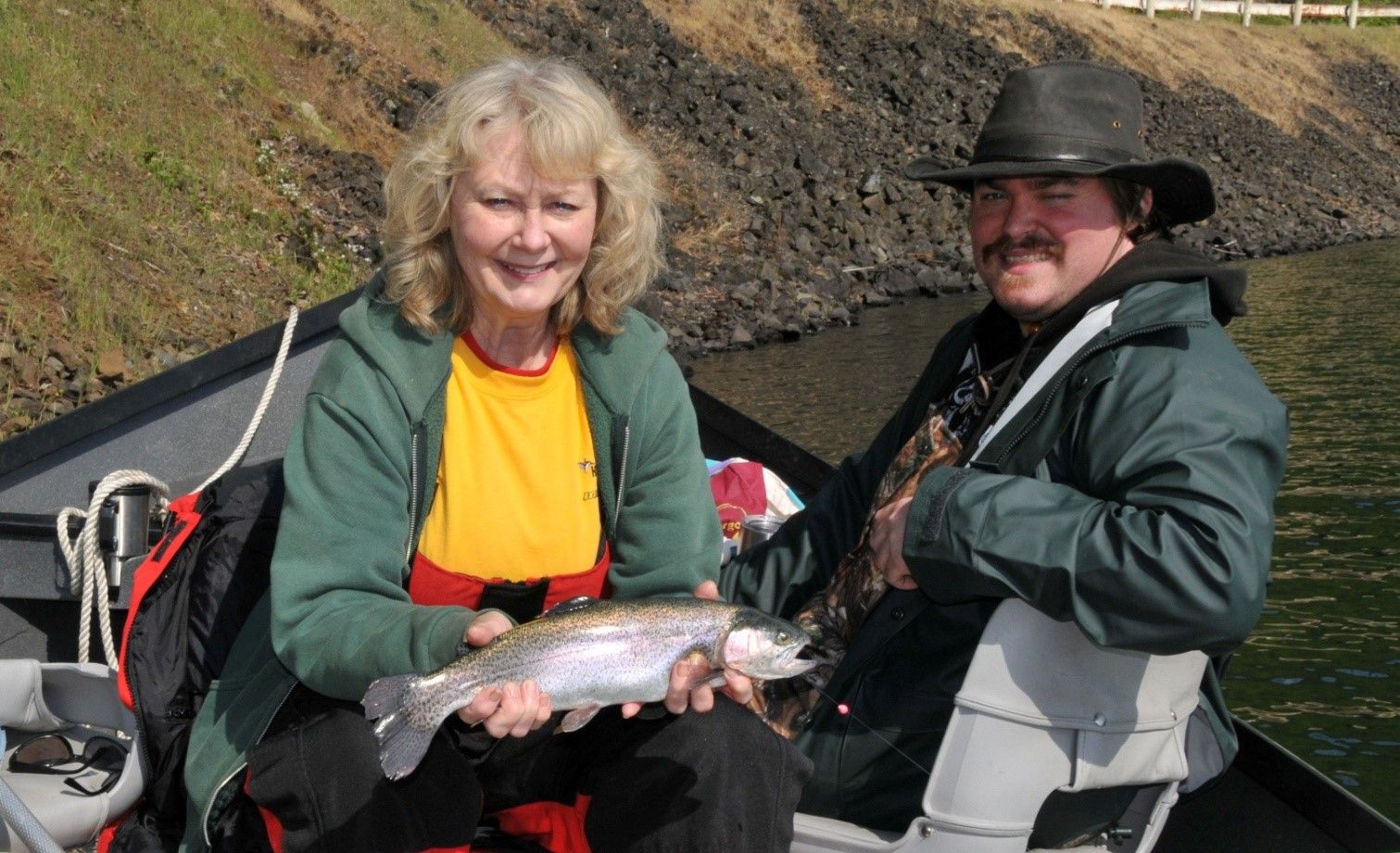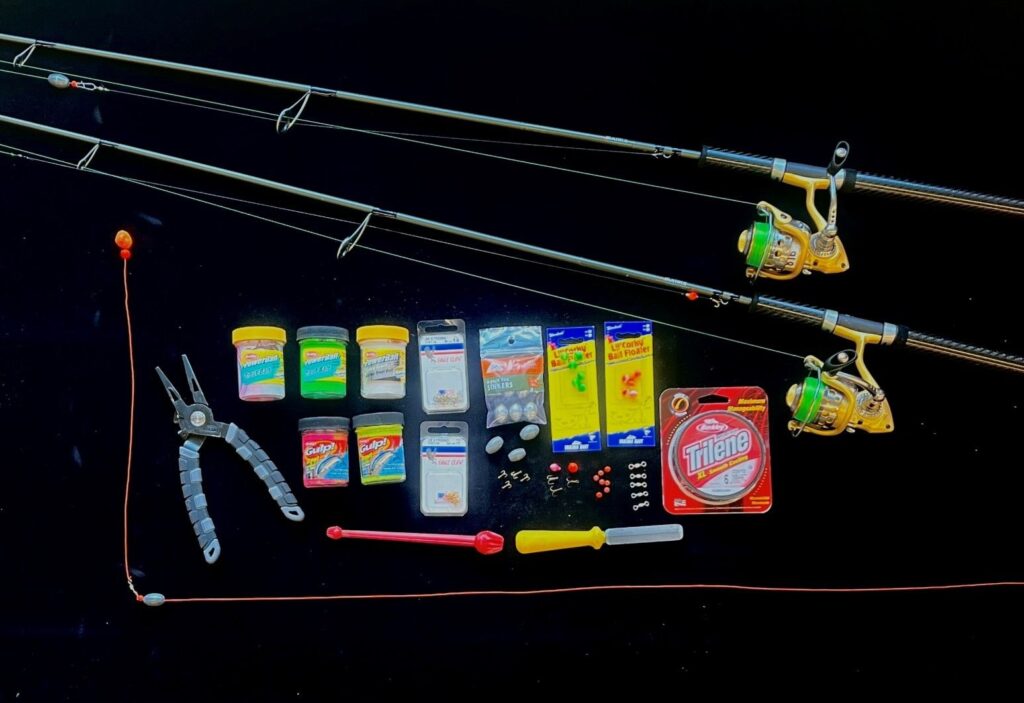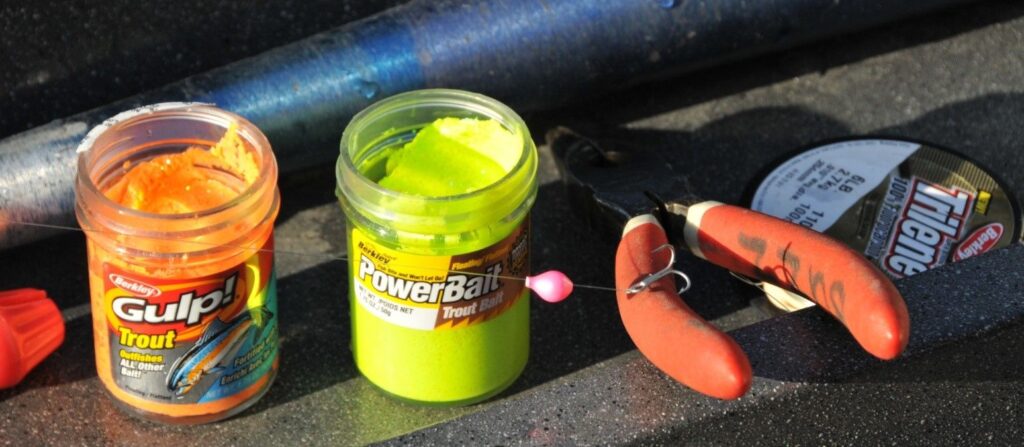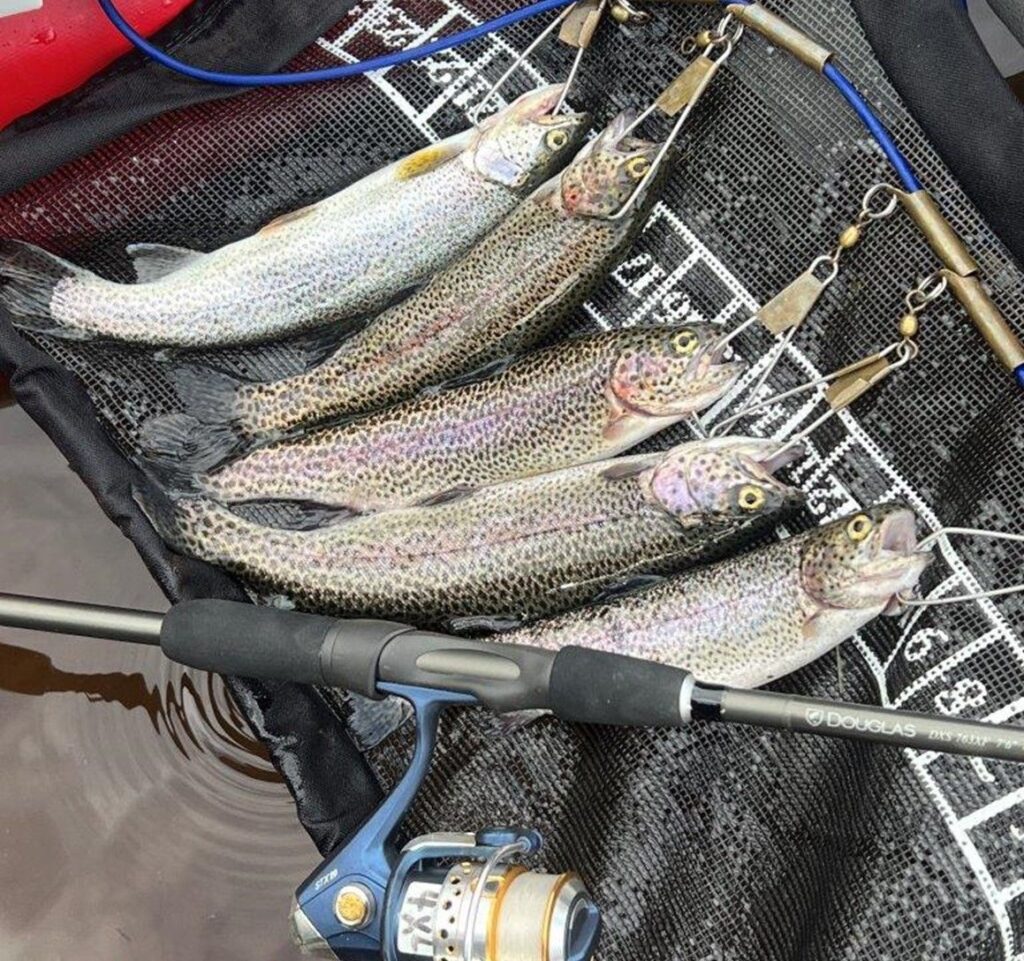By Buzz Ramsey
Bread, fed and released into hundreds of lakes and reservoirs across the country; unaware of your intent, the trout are ready for catching. Although rainbow trout are the type you will likely encounter, some lakes have been stocked with cutthroat and brown trout too.

In addition, Fish and Wildlife agencies in many states have liberated fish of larger-than-average size into many lakes, called Trophy Trout – that might measure 15 to 20 inches or more. Adding to this departments often add in a sprinkling of brood-stock trout to the mix that could weigh in at three to ten pounds or more and you’re realizing just how much rod and reel fun is to be had. The entire effort has been performed by state agencies so you can visit a local lake and enjoy instant trout success, providing you know how.
If you’re fishing adventure is to be from shore or an anchored boat, one method that works is to plunk (also known as still-fishing or dead-sticking) PowerBait. More popular than worms, PowerBait is a prepared bait formula that comes in jars and has the consistency of cookie dough. For this you will need a six-to-seven foot light-action spinning rod (my favorite is the Douglas LRS S6822F rated for 2-6 pound test monofilament and measures 6’8″ and LRS S7232F rated for 4-8 lb measuring 7’2″), a spinning reel filled with 6 or 8 pound test monofilament, some oval-egg sinkers (ranging in size from a half to one ounce), several size 7 or 10 swivels, 4mm plastic beads, 4 or 6 pound test leader material, small treble hooks, and a few jars of PowerBait.

Other handy-to-have items include a landing net (especially useful if you are fishing from a boat), needle nose pliers, hook remover, and stringer.
What is critical to success is to make sure your PowerBait presentation is buoyant enough to float above your sinker after casting into the lake. You see, a bait hovering above bottom is much easier for cruising trout to locate, as opposed to one setting on the bottom. I can’t stress the importance of this enough.
Many avid users of PowerBait have relied on the natural buoyancy of PowerBait to keep their bait above bottom. In order for a 3/8 to 1/2 size ball of PowerBait to float requires the use of a small size 16 treble hook. And while a few anglers might instead use a size 6 single, using a small treble is far more popular due to the fact that the moldable PowerBait grips the three prongs of a treble best.

What a growing number of anglers do to ensure their bait will float above bottom without fail, so cruising trout can quickly find it, is to use a buoyant Lil’ Corky single fish egg imitation in combination with their prepared bait (see above image). Given the use of a Corky you can step up your treble hook a size or two. In addition to guaranteed buoyancy, employing a Lil Corky means you can bait up using less PowerBait.
A selection of size 12 and 14 Lil Corky single egg imitation lures along with a handful of the same size treble hooks is what you will need. What I do is partner a size 14 treble with the size 14 Corky, or a size 12 Corky with a size 12 treble hook.
Rigging is easy: Thread your main line (extending from your rod tip) through your oval-egg sinker, add a small plastic bead and connect to your swivel. Although the most productive leader length may vary depending on conditions, you should start off with one measuring 18 to 24 inches. It’s then that you thread a Lil Corky onto your leader and add a small treble hook.
To bait up requires you to scoop out a small chunk of PowerBait from its jar and form it into a round ball around your hook. The idea is to use enough PowerBait, combined with the buoyancy of your Lil Corky, such that your bait will float up off the lake bottom.
Now, cast your baited outfit into the lake, let it settle to the bottom and wait for a bite. It’s important to leave some slack in your line, so trout can swim off with your bait and swallow it without feeling line resistance – facilitated by your free-sliding sinker. One last thing, you will need to set the hook by yanking back on your rod tip when you notice your line tightening up or rod tip dipping towards the water!
The right leader length is important because, after all, you want your bait floating at the depth the fish are cruising, which might be close to the bottom during times when the water is clear and sun bright, higher in the water column early and/or late in the day, or when overcast. And while the average leader length should be 18 to 24 inches, a leader long enough to extend above bottom-growing vegetation might be the ticket to success when trout are swimming just above the weed tops.
How far you cast out might vary depending on where fish are holding or how bright the sun is. For example, trout may be found fairly close to shore during low-light conditions, like early or late in the day or on overcast, rainy days; a time you might only cast out 20 to 30 yards or so. As the sun becomes more intense, try casting further into the lake. This is important because the way fish regulate the amount of light coming into their eyes is by changing their location; after all, they have no eyelids. Employing a larger/heavier oval-egg sinker and/or longer fishing rod can help extend your casting range during times when fish are holding in deep water.

To better facilitate long casts I sometimes switch to a longer fishing rod when fishing PowerBait that provides more casting leverage along with an increased amount of hook setting power. My favorite for this is the Douglas XMatrix in the DXS 7103MF model that measures 7’10”.
While it’s likely trout will spot your bait in their normal search for food, it’s good strategy to expand your coverage if and when the bite slows. What I often do is casts in a different directions or move in 30 yard increments along the lakeshore until I locate feeding fish. In addition, trout suspended higher in the water column may follow your bait as it sinks to the bottom, which can suggest a longer leader might produce best. Another strategy I often employ is to cast far and wait ten minutes before moving my bait toward me with 10 cranks of the reel handle, let the bait settle and wait another ten minutes before moving it again.
In preparation for your trip, do yourself a favor and check the condition of the line on your reel, and at the very least strip off a few yards before rigging up. If your line feels rough or breaks easily you should replace it. It’s also a good idea to wipe your rod and reel down with a damp cloth and add a drop of oil to the moving parts of your reel, all while checking it over for loose screws.
Your first step in figuring out what lake to try for trout, along with what’s legal or not, means reviewing a current copy of your state’s angling regulation pamphlet. Keep in mind that not all states have put-and-take trout fisheries. Step two might be to check out the stocking schedule for the lake you have decided to target, which will likely be posted on the fish and wildlife web site.
As you might guess, on lakes open to year-around-angling the trout will be running shortly after the hatchery truck arrives. On lakes where a start date applies, you’ll have to wait for opening day, which varies by state. You should also realize that low elevation lakes, especially shallow ones, likely offer good fishing for a few spring months. It’s then that you might seek trout action in larger or high elevation lakes that stay cool all summer long. Keep in mind opening day can offer quick limits as fish bite way better prior to being hit with a barrage of baits and lures offered by other anglers.
Editor’s note: Buzz Ramsey is a well known and respected sport fishing authority as related to trout, steelhead and salmon. He is an outdoor writer and proficient lure and fishing rod designer. Buzz has joined Douglas Outdoors as an Ambassador and member of our rod design team.
